 "ttyymmnn" (ttyymmnn)
"ttyymmnn" (ttyymmnn)
09/25/2018 at 11:38 ē Filed to: car quiz
 1
1
 28
28
 "ttyymmnn" (ttyymmnn)
"ttyymmnn" (ttyymmnn)
09/25/2018 at 11:38 ē Filed to: car quiz |  1 1
|  28 28 |
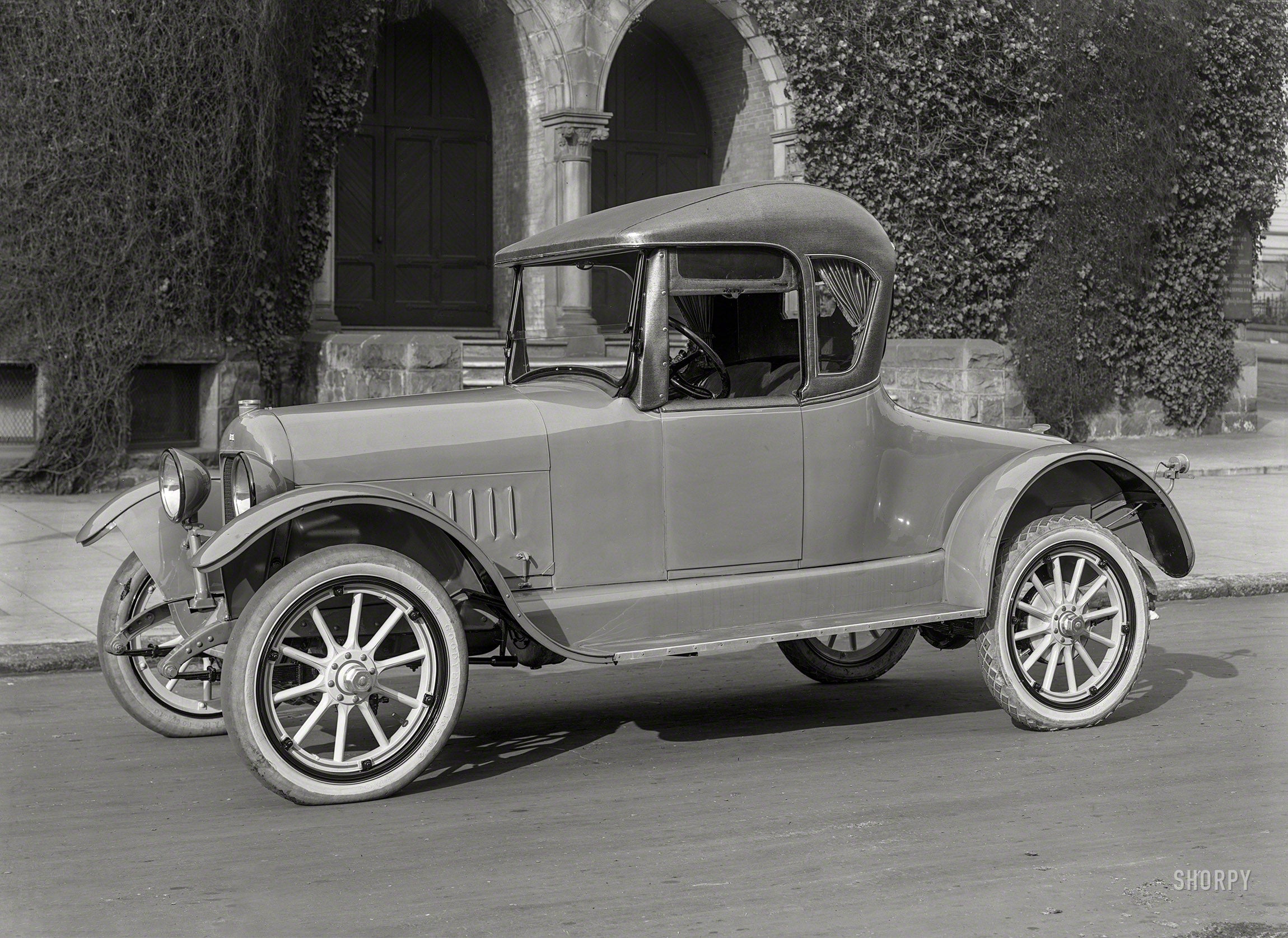
What an awesome little roadster. I love the curtains. Interestingly, the company that produced this little guy also built airplanes.
Answer : Our obscure car for today is a Velie roadster. The company was founded in 1902 as the Velie Carriage Company by Willard Velie, the maternal grandson of none other than John Deere.† Velie Motors opened its doors in 1908 and produced cars for twenty years. In 1927, they bought the Mono Aircraft Inc. and started producing the !!!error: Indecipherable SUB-paragraph formatting!!! . They also produced aircraft engines. Willard died in 1928, and his son, Willard Jr., sold the car company before he passed away in 1929. The car factory was bought by John Deere.
 CarsofFortLangley - Oppo Forever
> ttyymmnn
CarsofFortLangley - Oppo Forever
> ttyymmnn
09/25/2018 at 10:38 |
|
1923 Focus RS.
 Just Jeepin'
> ttyymmnn
Just Jeepin'
> ttyymmnn
09/25/2018 at 10:40 |
|
Clearly designed without todayís obese Americans in mind. Look at that ti ny door!
 Future next gen S2000 owner
> Just Jeepin'
Future next gen S2000 owner
> Just Jeepin'
09/25/2018 at 10:44 |
|
Not just that, the steering wheel blocks off half of it.
 ttyymmnn
> CarsofFortLangley - Oppo Forever
ttyymmnn
> CarsofFortLangley - Oppo Forever
09/25/2018 at 10:49 |
|
Close. Ford did make airplanes. Though the Trimotor is best known, they started with this, the Ford Flivver.
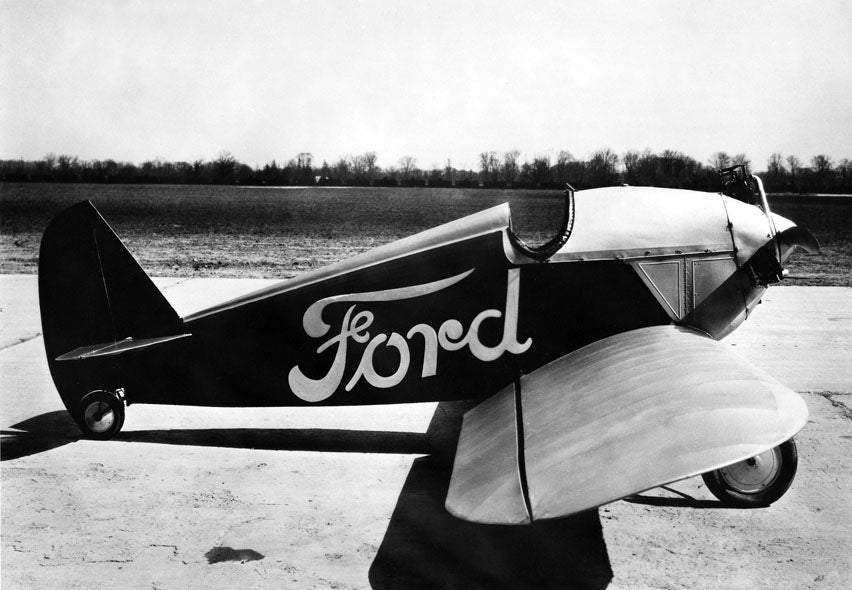
 RamblinRover Luxury-Yacht
> ttyymmnn
RamblinRover Luxury-Yacht
> ttyymmnn
09/25/2018 at 10:50 |
|
I know I saw this marque in one of the other searches, given that the raised stiffening lip on the radiator shell bottom edge of top face and hemmed/reinforced front fenders are absolutely unique. I donít instantly remember the name, though...
 ttyymmnn
> RamblinRover Luxury-Yacht
ttyymmnn
> RamblinRover Luxury-Yacht
09/25/2018 at 10:55 |
|
Plenty of time. Iím just sitting here typesetting music. Iíll wait.
 RamblinRover Luxury-Yacht
> ttyymmnn
RamblinRover Luxury-Yacht
> ttyymmnn
09/25/2018 at 10:58 |
|
Is it a 1917 Chandler?
 CarsofFortLangley - Oppo Forever
> ttyymmnn
CarsofFortLangley - Oppo Forever
> ttyymmnn
09/25/2018 at 11:00 |
|
https://en.wikipedia.org/wiki/Republic-Ford_JB-2
Coolest ford aircraft(?)
 ttyymmnn
> RamblinRover Luxury-Yacht
ttyymmnn
> RamblinRover Luxury-Yacht
09/25/2018 at 11:00 |
|
As far as I know, Chandler never built airplanes.
 ttyymmnn
> CarsofFortLangley - Oppo Forever
ttyymmnn
> CarsofFortLangley - Oppo Forever
09/25/2018 at 11:01 |
|
Certainly the deadliest. Oh wait, the Pinto.†
 CarsofFortLangley - Oppo Forever
> ttyymmnn
CarsofFortLangley - Oppo Forever
> ttyymmnn
09/25/2018 at 11:05 |
|
Or the thousands surely killed by the Mustangís bloodlust.
Ford has blood on their hands
 punkgoose17
> ttyymmnn
punkgoose17
> ttyymmnn
09/25/2018 at 11:08 |
|
My first guess was Curtis, but I donít think he made any cars just planes and motorcycles? My 2nd guess was Napier, but that doesnít seem correct. Best of luck I got to get back to work.
Also,
I want to read this:
http://www.earlyamericanautomobiles.com/americanautomobiles3.htm
Hopefully sometime this week.
 ttyymmnn
> punkgoose17
ttyymmnn
> punkgoose17
09/25/2018 at 11:10 |
|
Nope and nope. Thanks for playing, though. Iíll post the answer in a little while. Iíve got work to do myself!
 RamblinRover Luxury-Yacht
> Future next gen S2000 owner
RamblinRover Luxury-Yacht
> Future next gen S2000 owner
09/25/2018 at 11:25 |
|
Talking of useless door openings, look at this Stutz:
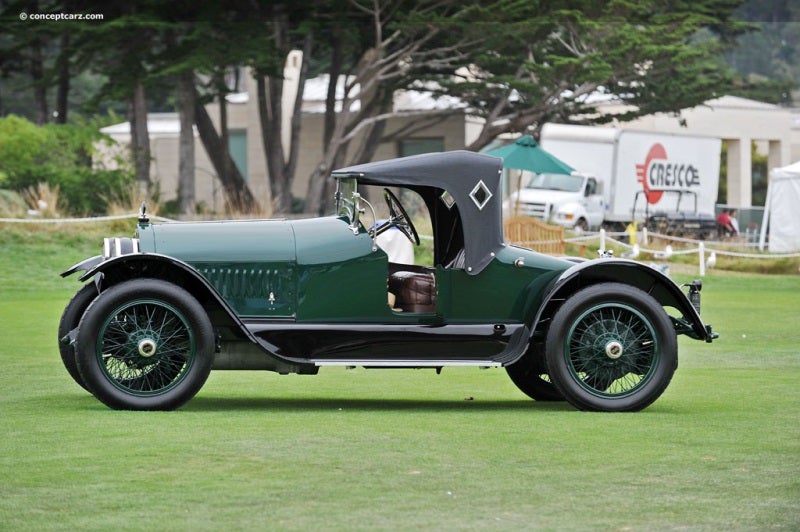
 Matt Nichelson
> ttyymmnn
Matt Nichelson
> ttyymmnn
09/25/2018 at 11:27 |
|
Velie? They made planes toward the end of its lifespan.†
 ttyymmnn
> Matt Nichelson
ttyymmnn
> Matt Nichelson
09/25/2018 at 11:31 |
|
Ding ding ding! We have a winner!
 RamblinRover Luxury-Yacht
> ttyymmnn
RamblinRover Luxury-Yacht
> ttyymmnn
09/25/2018 at 11:36 |
|
Hereís a picture of one in modern times:
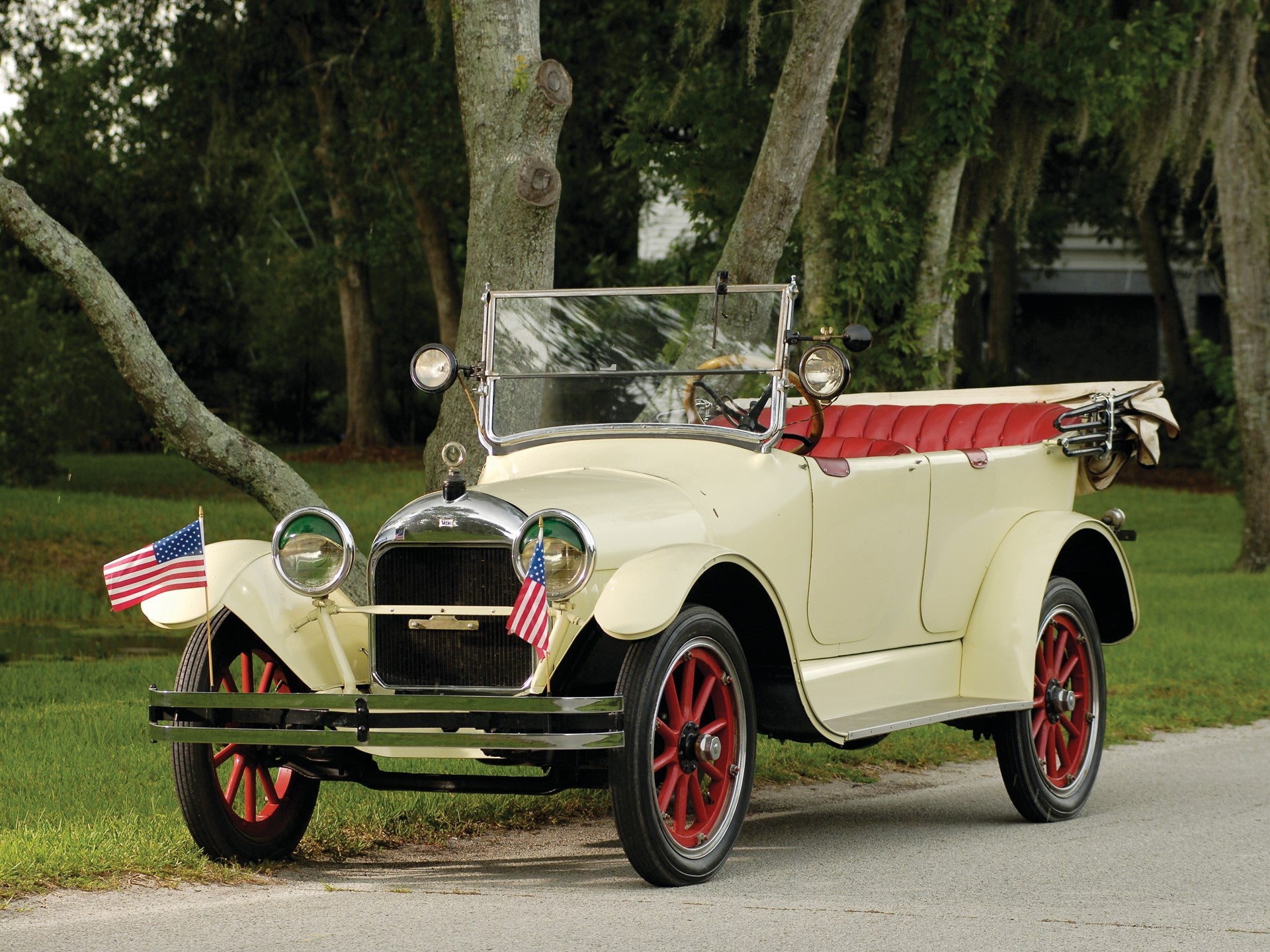
Very unusual fender construction and cowl.
 Future next gen S2000 owner
> RamblinRover Luxury-Yacht
Future next gen S2000 owner
> RamblinRover Luxury-Yacht
09/25/2018 at 11:39 |
|
There doesnít appear to be any headroom in that car. Maybe topless was a way of life.
 RamblinRover Luxury-Yacht
> ttyymmnn
RamblinRover Luxury-Yacht
> ttyymmnn
09/25/2018 at 11:39 |
|
I think the company that had been tickling the back of my mind with a ribbed cowl stamping and similar fender construction was Stutz, though obviously it is after all a Velie.
http://theoldmotor.com/?p=138221
 Matt Nichelson
> ttyymmnn
Matt Nichelson
> ttyymmnn
09/25/2018 at 11:47 |
|
Fun fact: Velie designed †one of the first cars with the A pillar slanted as opposed to straight up and down like most other cars of the time.†
 ttyymmnn
> Matt Nichelson
ttyymmnn
> Matt Nichelson
09/25/2018 at 11:51 |
|
The fyootcher!
 RamblinRover Luxury-Yacht
> ttyymmnn
RamblinRover Luxury-Yacht
> ttyymmnn
09/25/2018 at 11:56 |
|
As someone with a little bit of manufacturing education, this is what Iím seeing re: the fenders and what Iím seeing. T raditional fender construction of the time was to use heavy metal in a single stamp/draw process. This REO is exemplary of what was more ďnormalĒ:
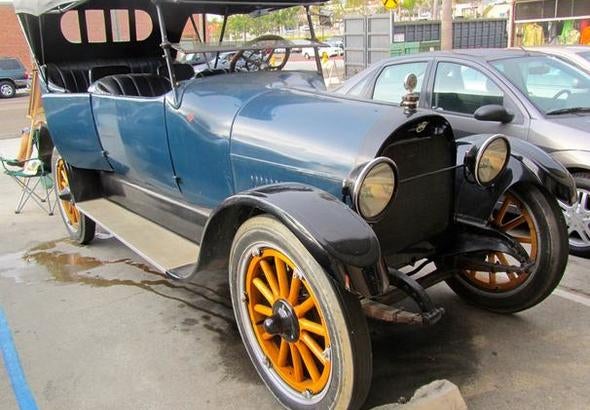
A single mold process, top and bottom, stamping a single piece of metal. Top, with sides, and a rib to stress the metal and give strength (red):
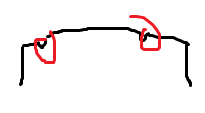
Sometimes, an additional wrinkle or two:
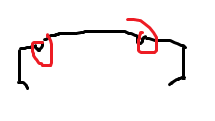
In contrast, the Stutz, Velie, and a couple of others apparently including Saxon and Jordan, have a hemmed-over ďcapĒ to the fender:
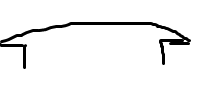
...and either an added angle to the inside or a multiple-mold process to draw an angle back straight. This is more possible with light metal, more labor intensive, but wouldnít necessarily require a heavy press. More useful on a cheap, light vehicle that isnít necessarily the cheapest on the road - or as with the Stutz, needs to be light and fashionable.
Oaklands...
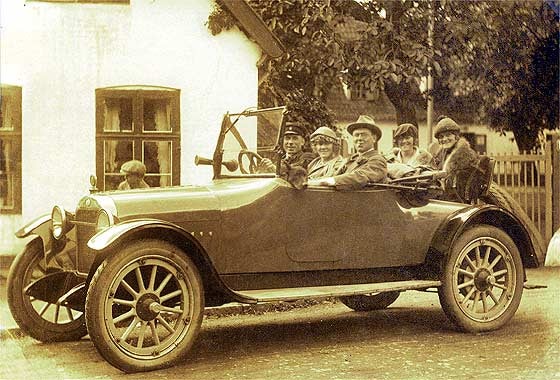
may have been made with a mass-producible version of this: relatively heavy metal, drawn to this profile:

And then crimped.

 ttyymmnn
> RamblinRover Luxury-Yacht
ttyymmnn
> RamblinRover Luxury-Yacht
09/25/2018 at 11:58 |
|
Interesting! Thanks.†
 RamblinRover Luxury-Yacht
> ttyymmnn
RamblinRover Luxury-Yacht
> ttyymmnn
09/25/2018 at 12:08 |
|
Shorpy link dump of diversions I ran across while trying to spur my brain into action:
http://www.shorpy.com/node/18768
http://www.shorpy.com/node/22341
http://www.shorpy.com/node/23364
The last is quite interesting. There may only be two remaining, both owned by the same man. The second is more interesting given the story there in the comments. The first is amusing given Jordanís model-naming and advertising history.
https://en.wikipedia.org/wiki/Jordan_Motor_Car_Company
 ttyymmnn
> RamblinRover Luxury-Yacht
ttyymmnn
> RamblinRover Luxury-Yacht
09/25/2018 at 12:10 |
|
Hey--youíre stealing all my material!
 fintail
> ttyymmnn
fintail
> ttyymmnn
09/25/2018 at 13:10 |
|
Nice, I donít think I would have guessed this.
Also has a rare application of a ďCalifornia TopĒ, being on a 2 door model. Very few of these tops survive.† I like the side curtain, which appears to pull down like a window shade.
 ttyymmnn
> fintail
ttyymmnn
> fintail
09/25/2018 at 13:32 |
|
I assume that top is removable?
 fintail
> ttyymmnn
fintail
> ttyymmnn
09/25/2018 at 13:35 |
|
Yes, these were kind of the intermediate step between open and closed cars.† Closed cars had existed long before, of course, but werenít very popular until the early 20s.††